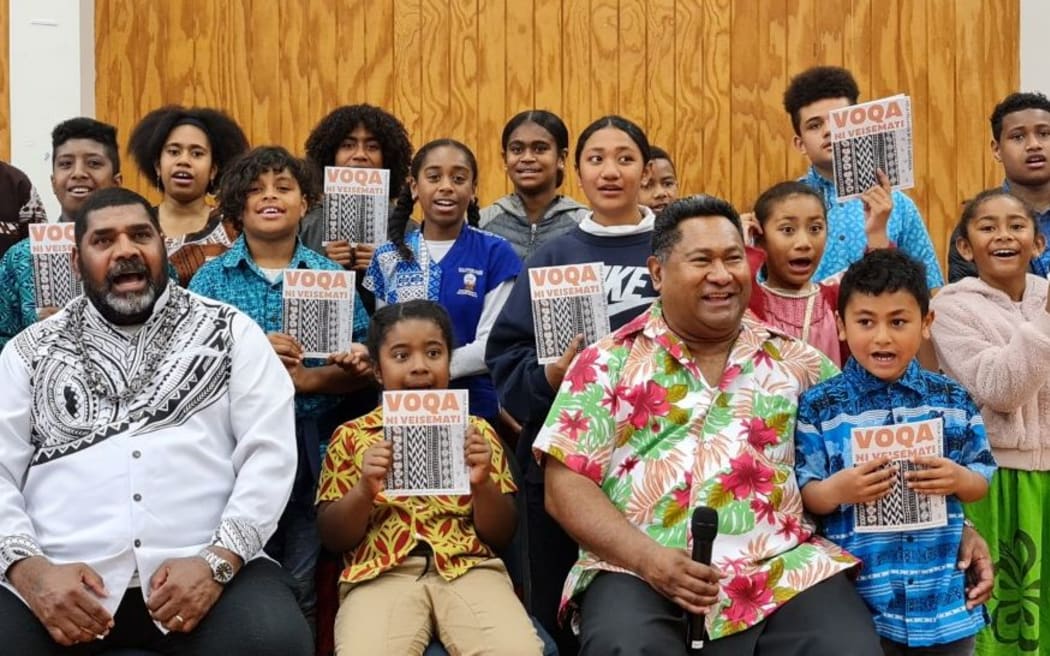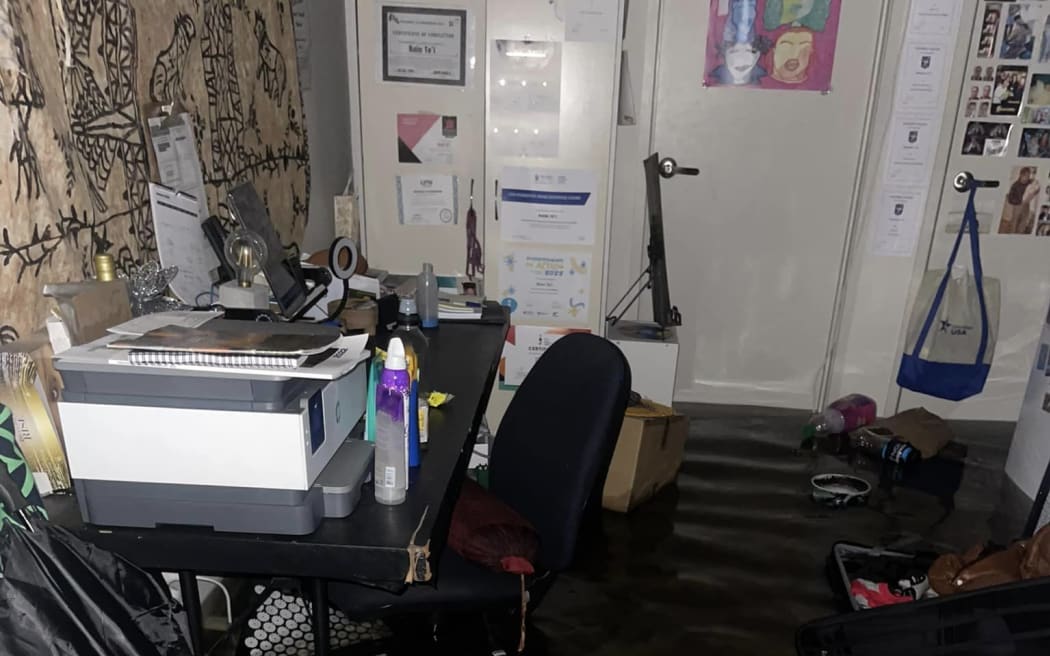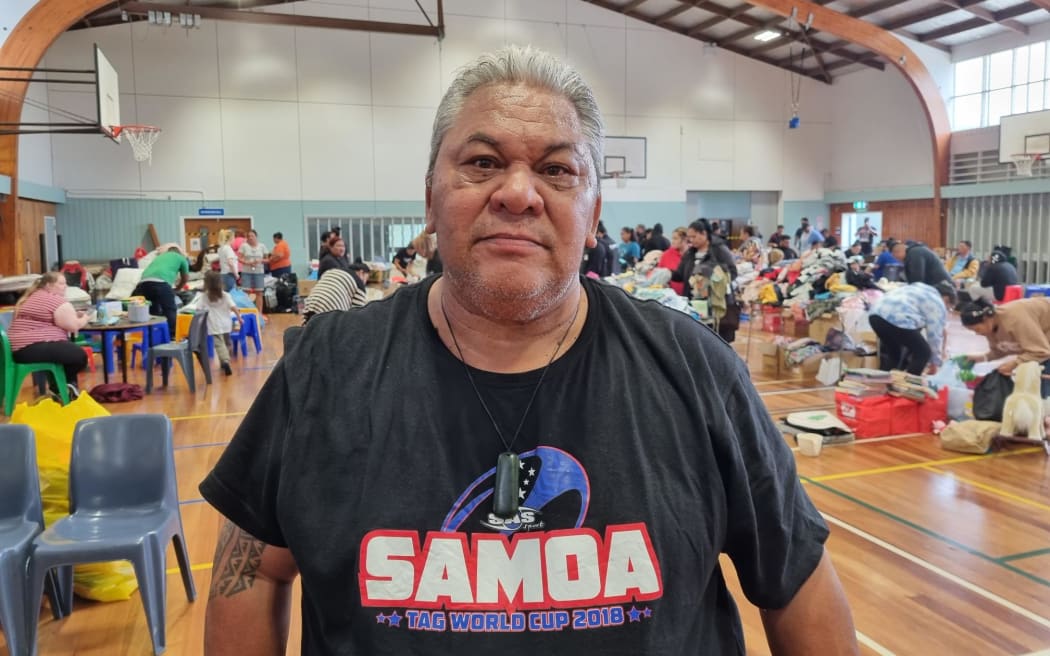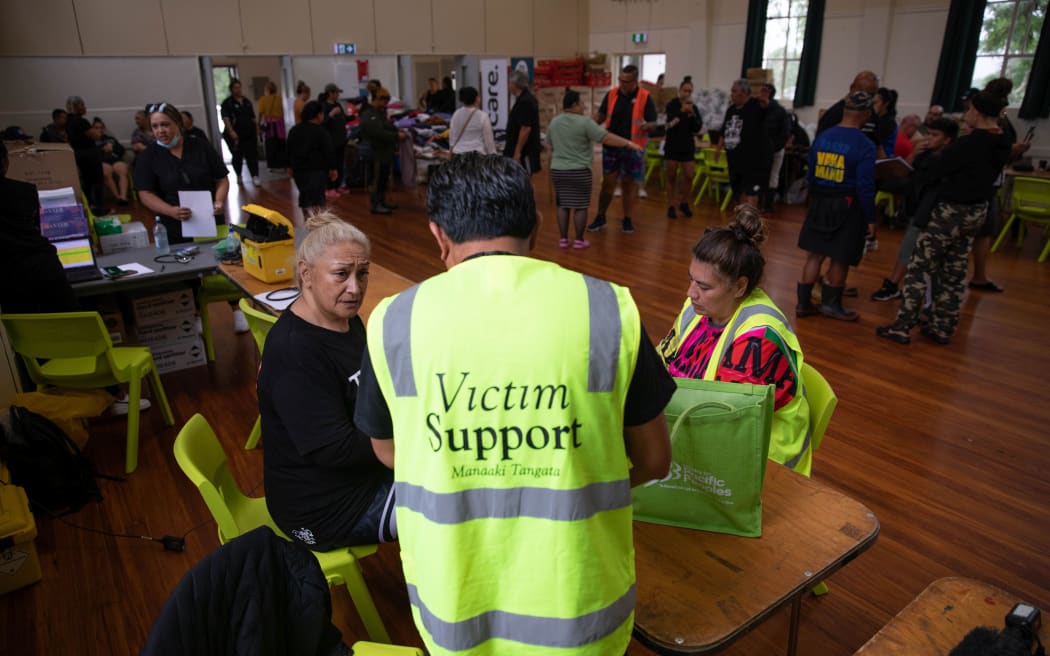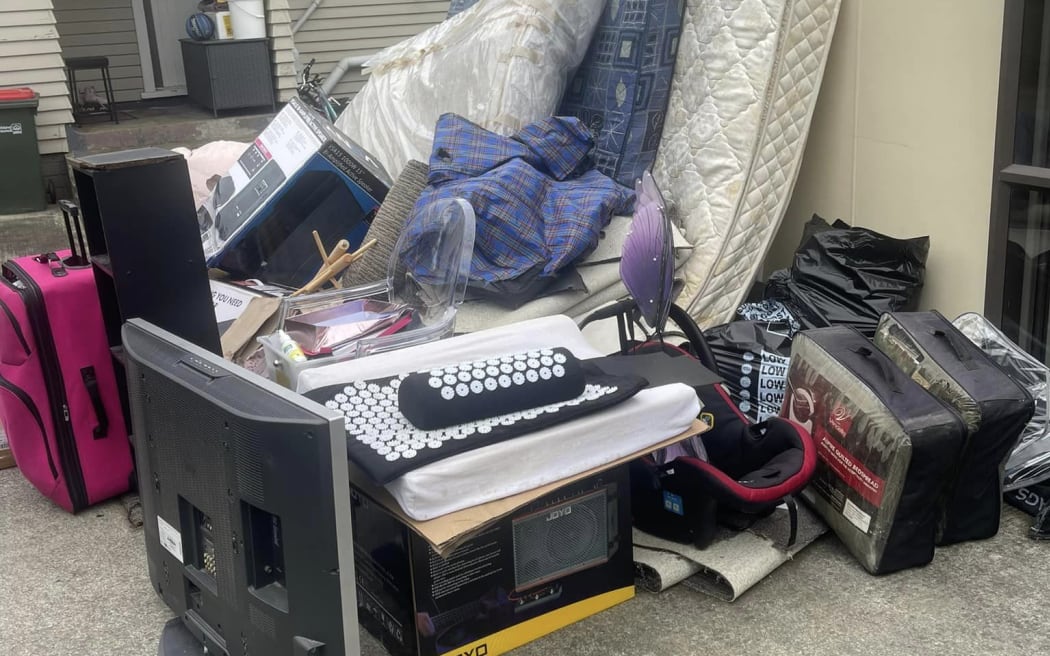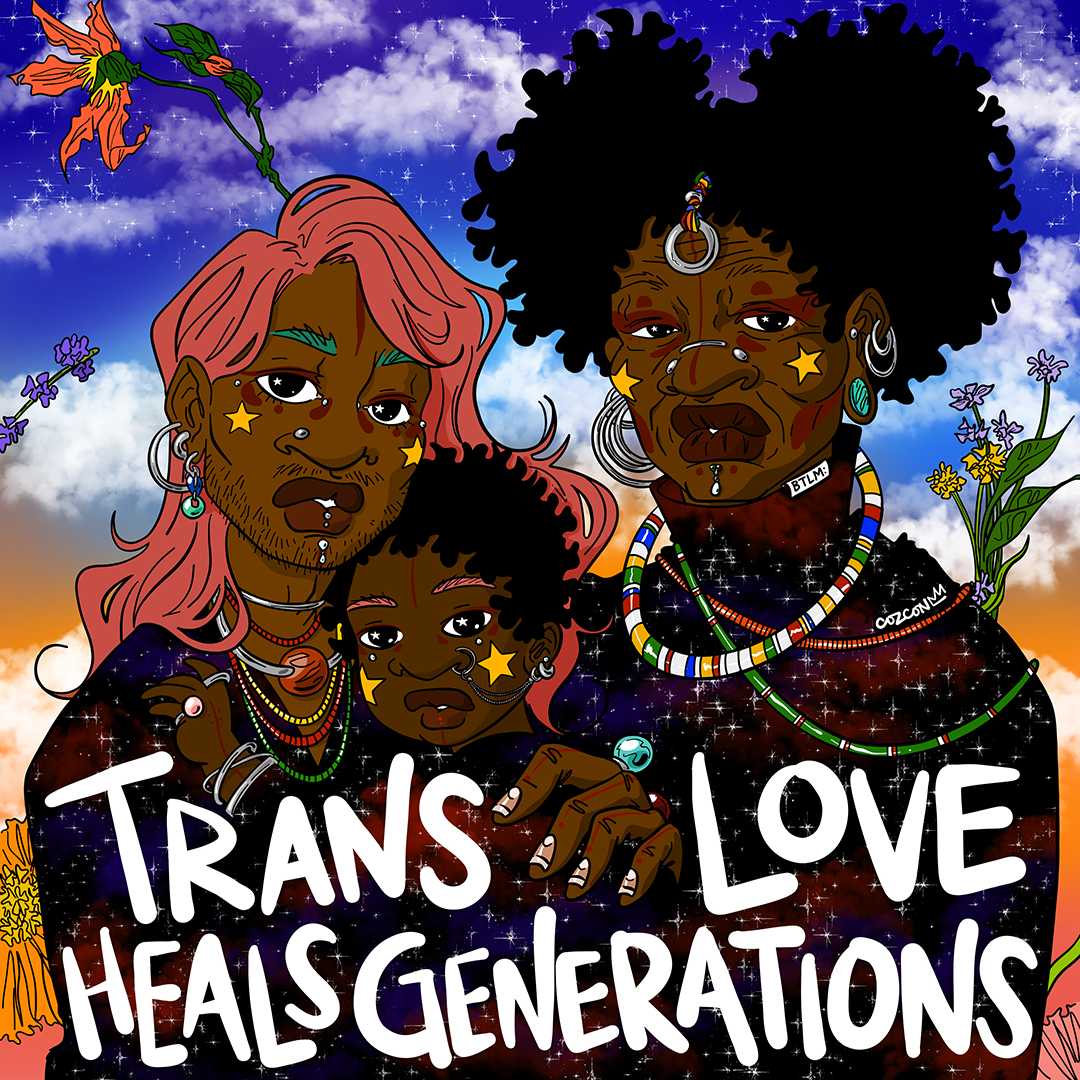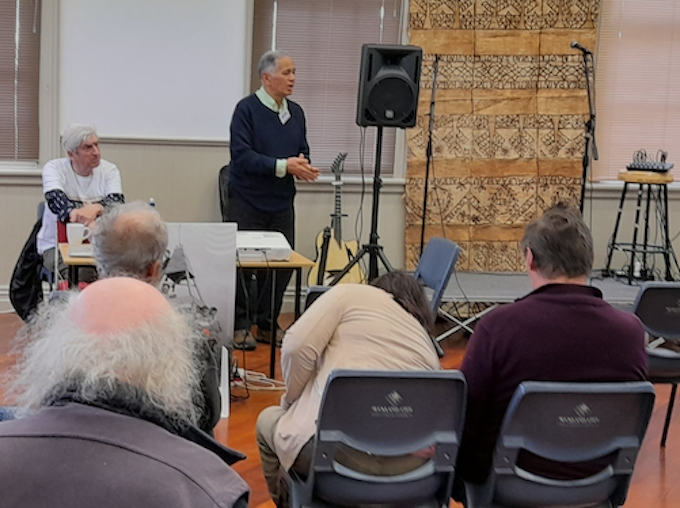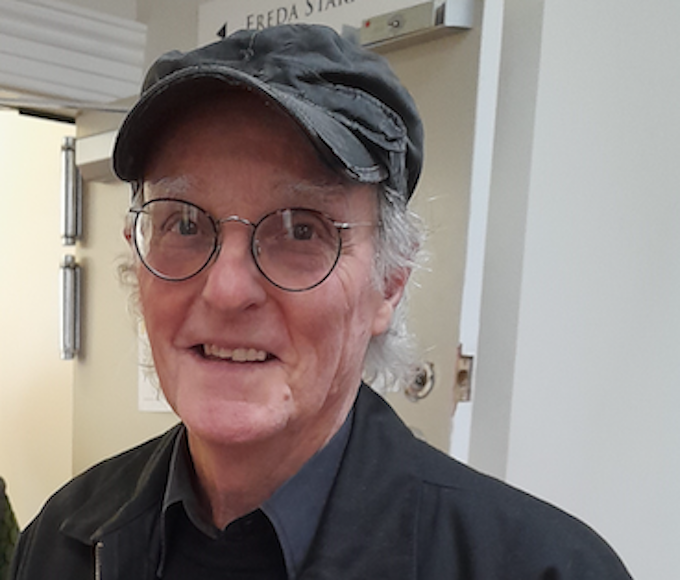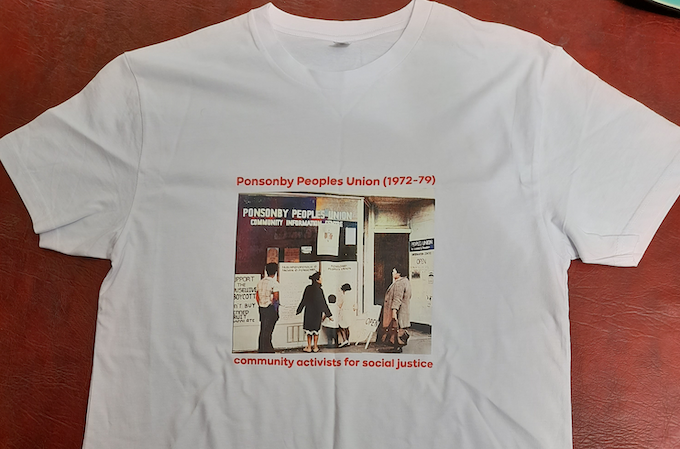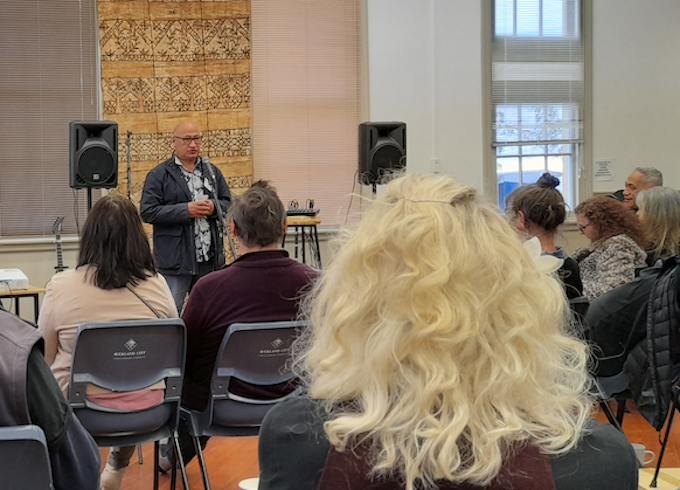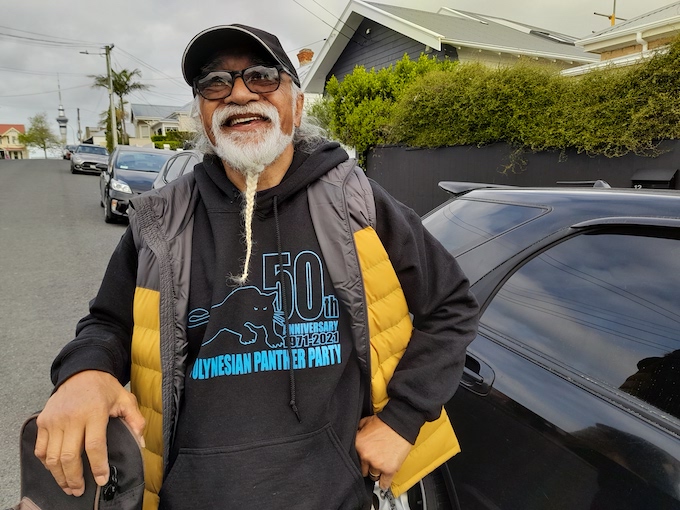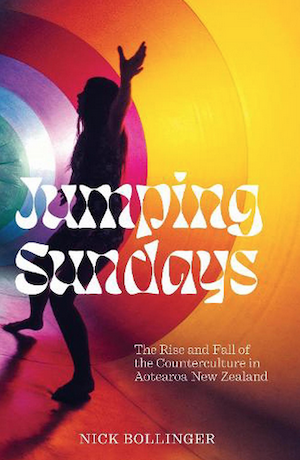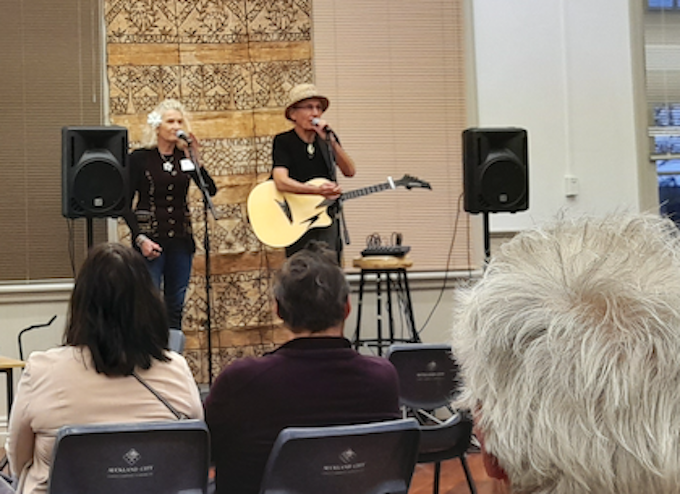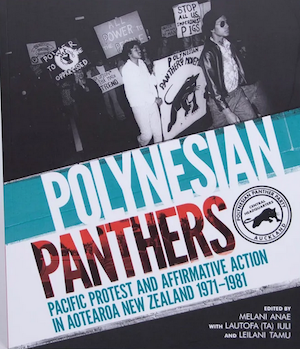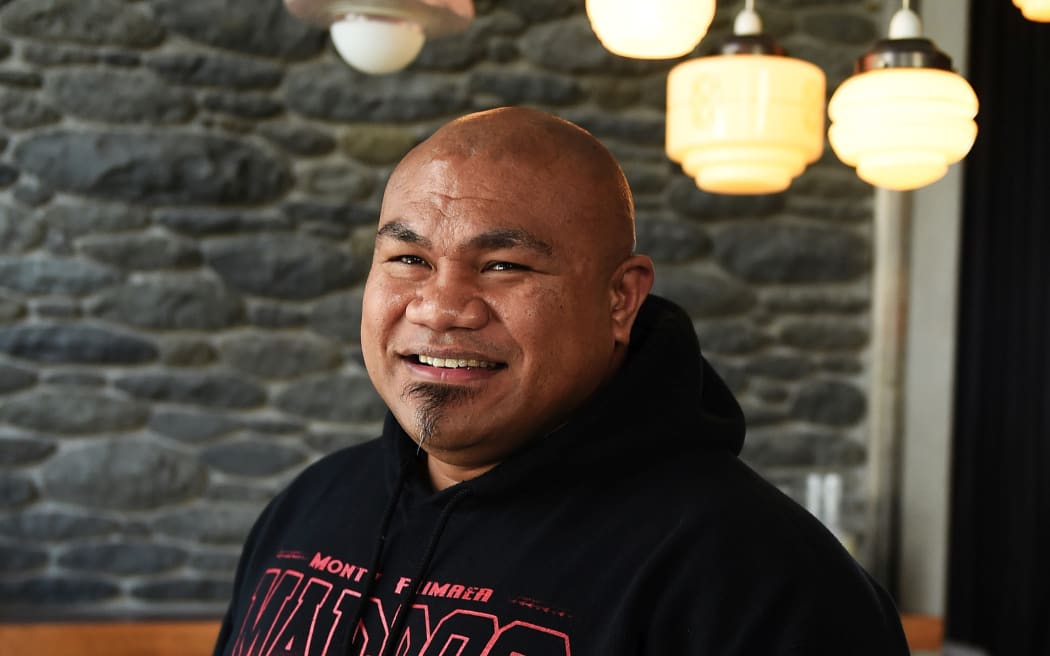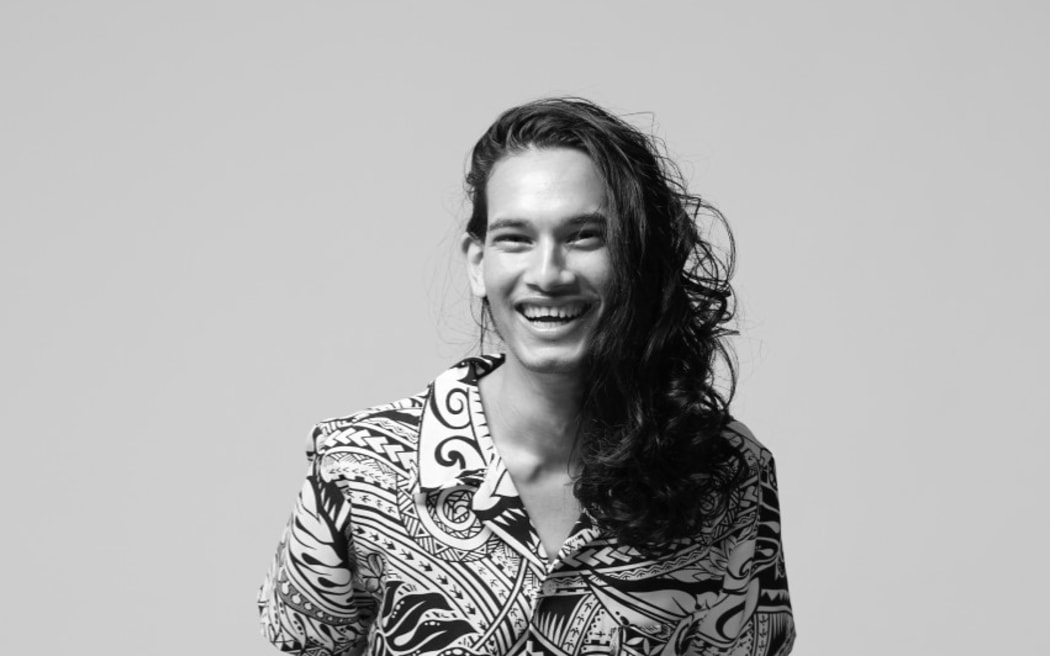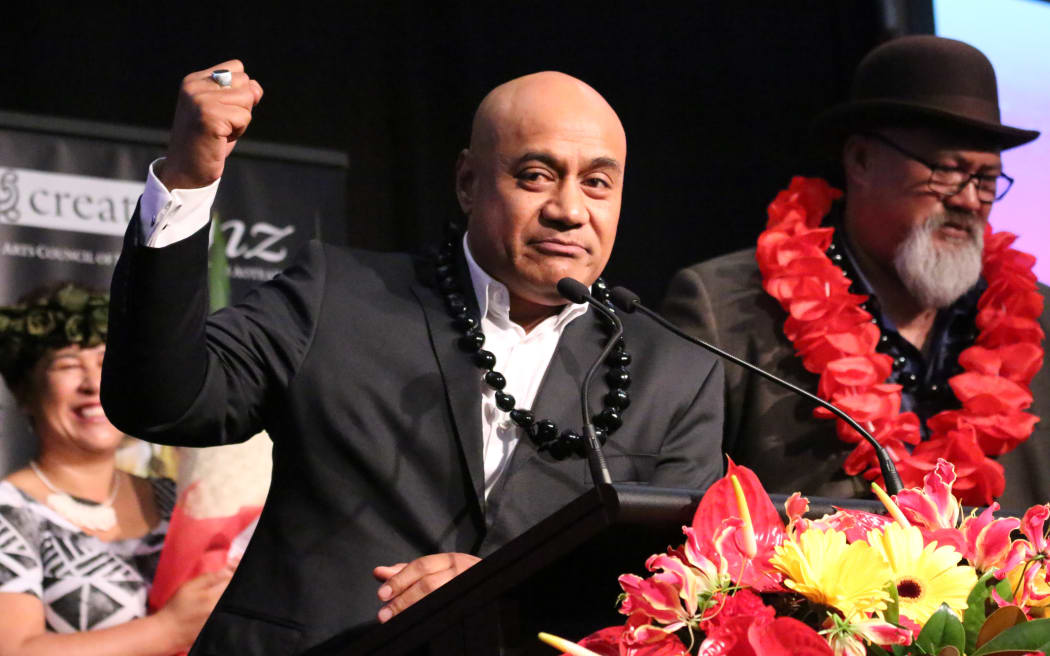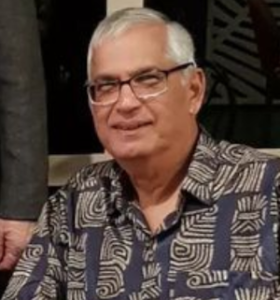“Our mutual investment in one another’s survival is our greatest resource, and our greatest hope,” says Kelly Hayes. In this episode of “Movement Memos,” Hayes talks with anthropologist and survivalist instructor Chris Begley about the lessons of his book The Next Apocalypse: The Art and Science of Survival, and why many of us might be preparing for the wrong apocalypse.
Music by Son Monarcas and David Celeste
TRANSCRIPT
Note: This a rush transcript and has been lightly edited for clarity. Copy may not be in its final form.
Kelly Hayes: Welcome to “Movement Memos,” a Truthout podcast about organizing, solidarity and the work of making change. I’m your host, writer and organizer Kelly Hayes. Today, we are talking about the apocalypse… again. We are also talking about the concept of collapse and what it means historically and within the scope of our own lives. I know that, in these uncertain times, a lot of people are feeling anxious and unprepared for looming catastrophes, but the truth is, our society’s prevailing fantasies and fiction about the apocalypse have left us pretty confused about what major catastrophes will actually demand of us. So what we are really going to talk about today is how we think about, understand and imagine the apocalypse, and what all of that means for the future we have yet to create. I am excited to be joined today by Chris Begley, author of The Next Apocalypse: The Art and Science of Survival, which has become one of my favorite books. Chris Begley is an underwater archaeologist, a wilderness survival instructor, and an anthropology professor. In his book, Chris examines some of the apocalyptic events humanity has already faced, drawing lessons from the past, while also troubling our understanding of disasters in the present. He looks at “what actually happens when things fall apart,” what our fantasies and fiction tend to get wrong, and what the consequences of that confusion might be.
But before we get into the divide between fantasy and reality, we should name that, when we are talking about transformations that have occurred in the past, collapse might not always be the right word. Not every reconfiguration is a collapse, and not every collapse is necessarily a bad thing, because some things have to go.
CB: One of the things I talk a lot about in the next apocalypse is this term “collapse” that we often use colloquially, but we also use it as archeologists sometimes. That’s in some ways sort of a complex and problematic word. There’s this implication with this term “collapse” that something has failed, think of a structure that collapses. What we’re often looking at in the case of a society is not necessarily that something that has failed, but something that’s transformed or something that people have rejected or something that for whatever reason has ceased to exist, but it wasn’t out of some failure. That’s one of the complexities.
Another thing is that it implies this sort of totality of change in a way; everything has fallen apart. What we see archeologically, historically and even in contemporary times is that that’s not the way things fall apart. They fall apart piece by piece and over a long time. Often what we think about in collapse is the type of thing we see in these fictional narratives that we create based on imagination we’ve developed partly from the vocabulary we use and that reinforces these ideas.
In many cases, the kinds of things we talk about as collapses were really these long-term transformations. In my book, I talk about two in particular that we often label collapses, and one is the decline of the Western Roman Empire and the other is the Classic Maya collapse. Now, the decline of the Roman Empire around the Mediterranean during the first centuries of the common era is something that every historian, every archeologist that really looks at it realizes was a long gradual process and was really different for different people.
So the collapse could represent a really profound change for certain people and certain places based on their position in society, while in other places, the outskirts of the empire, for instance, day-to-day life may be relatively consistent with what it was before. In the case of the Classic Maya collapse in the 9th century of the common era, we see that, again, this is something that across the region, and this region would be parts of Central America and parts of what’s now Mexico, across the region, we see really varied impacts from whatever it was that was causing things to really change at this time.
In some areas we see evidence of drought. In some areas we see evidence of warfare. In some areas, maybe it’s environmental issues like deforestation. It’s not consistent across the area and the decline happens at different times for different groups. Perhaps an even greater thing is that really the collapse is confined to part of this area and the other part, the northern part of this area actually seems to experience sort of a renaissance. All of this suggests that these simplistic ideas of collapse where everything has fallen apart are not realistic when we look at it at any scale beyond some localized event.
KH: Overly simplistic ideas about the past can definitely contribute to a distorted view of the present, and any potential future, but our society’s apocalyptic fiction and storytelling also create plenty of distortions.
Chris Begley: Humans are conditioned, it seems, to want to create stories and we know that we have this what’s sometimes called a “narrative bias” where we really learn and transmit things via stories. When we think about the future, that’s no different. We have these stories that we’ve created for a number of reasons about the way things might unfold. Now, some of these seem to reflect fears, fear of nuclear war or climate change or something of that sort. But also, part of what we see is clearly what I would label “fantasies.” These are things that are not necessarily negative even though they’re couched in this negative context.
When we look at apocalyptic literature, we really see that there are a number of things embedded in these narratives that when we unpack it a little bit, we can see what desires are being represented. Some are probably not particularly problematic, but there are a number that are pretty nefarious, and these are couched often in this return to a traditional lifestyle or even a simpler lifestyle.
For instance, we see embedded in a lot of these fantasies a type of traditional masculinity, which I think can also be read as pretty misogynistic. This involves not only doing things that we think in our popular imagination that were sort of the manly things to do in the past, using certain kind of tools, surviving in the wilderness, being self-sufficient, et cetera. But we see that the way in which it’s talked about is sort this at long last we can get back to the way things were supposed to be when I didn’t have to watch what I say or be so worried about the snowflakes that are going to be offended, this familiar kind of rhetoric that we hear. But we see these sort of really problematic ideas wrapped up in these fantasies.
There’s a lot of racial elements to this, too. One of the things we often see in this apocalyptic literature is this rural-urban divide. I mean, it doesn’t take much imagination to know that in the United States, at least, this is also a racial divide. If I say the term inner city, I know what’s going to come to mind in the general population. Even terms like urban, you now see used as, not really code I guess, but shorthand for African American or for Latinx groups that are concentrated in some urban areas. So when we look at these fantasies and we see something that seems initially as innocuous as this privileging of rural over urban, a little bit closer reading reveals that there’s more to it than that and it often has these sorts of undertones.
KH: In post-apocalyptic fiction, the idea of getting out of an urban environment, as a means of survival, is a familiar one. As a big fan of apocalyptic fiction, I have long noticed that men are usually the protagonists in such stories. The idea of a man, particularly a father figure, as the last best hope of those around him is very common. It’s also worth noting that most of those groups, which only have a hope in hell, thanks to a strong man, are predominantly white. These stories not only emphasize a man’s supposed role as protector, but also reinforce the idea that, in a disaster, you can only trust your family or the members of your in-group, if even those people, because anyone else might kill you and take what you have. Chris talks a lot about apocalyptic fiction in his book, and I really appreciated that discussion, because as much as I enjoy zombie movies, I think we really need to stop and think about the social messaging that’s embedded in these stories, and how it’s impacted us. The Netflix zombie series “Black Summer,” for example, depicts a post-apocalyptic world where no one can be trusted. In a country overrun by zombies, empathy is a weakness and acts of compassion are deadly mistakes. I have actually heard people praise “Black Summer” for tackling what a moment of collapse might really look like in the United States.
“Black Summer” is not unique in this depiction of collapse, where disaster turns everyday people into hysterical rioters and dastardly killers, almost instantly, it’s just particularly extreme in its depictions. I thought a lot about this trope, of anyone outside of your in-group posing a deadly threat, as I read about George Lincoln Rockwell’s book White Power, which Tal Lavin described in his book Culture Warlords. The final chapter of White Power begins with an extended fantasy sequence that depicts a race war in which white people, simply going about their lives, are overrun by an apocalyptic uprising. The power goes out, phone lines are cut, and when the white male protagonist manages to get a transistor radio turned on, he hears the radio host being murdered. He then slips into hero mode, using the guns he quite fortunately owns to fight the mob, and leads some survivors to a basement where they can take shelter. One of his neighbors, a formerly liberal white woman, stabs a dying Black man, because, in Rockwell’s opinion, she finally gets it. But of course, it’s too late, because white people are doomed in that story. The Camp of the Saints, which is a French novel from the 1970’s that is very popular with white supremacists and the far right, including Stephen Miller, has similar themes. In that story, a fleet of ships carrying Indian migrants makes its way to France, and the French government’s decision to allow the fleet to arrive, rather than destroying it, is depicted as a mistake that leads to the collapse of western governments and a nightmarish, borderless Europe. So we can see how easily a paranoid, in-group/out-group approach to apocalyptic storytelling can lend itself to reactionary fantasies. Some of those fantasies suggest what actions ought to be taken in the present, to avoid such nightmares, and some, like The Turner Diaries, offer white supremacists fantasies as wish fulfillment, in the form of racialized violence that’s depicted as inarguably righteous, given the circumstances.
Stories that suggest that everyone will be against us during some eventual, inevitable crisis, are also used to justify and inspire acts of violence in the real world. Stories about how pretty much everyone will pose a threat to us during emergency justify and inspire our cooperation with profound levels of violence dealt out by police, the government and the capitalist system. This cooperation helps to enable systemic violence against some of the same targets that white supremacists and fascists target in their fantasies, and in their real-world violence, such as migrants, Black people, Muslims, and trans people. This cooperation also helps ensure that the system that is marching us toward destruction is not disrupted in its work, because we have been conditioned to fear the disorder that authority and fiction have foretold more than neoliberalism, fascism or ecocide.
I’m not getting down on people who like “Black Summer,” by the way. I enjoy a lot of problematic television. I think what’s important is that we are critical of how these trends in storytelling shape our intellectual lives and impact our relationships, and how failing to imagine something else might limit us.
Some authors have given us more to consider. Octavia Butler, for example, is often cited for her prescient description of a social and political unraveling in the U.S., under a Trump-like leader. But what fewer people highlight, as Leah Lakshmi Piepzna-Samarasinha discusses in her book Care Work: Dreaming Disability Justice, is that the protagonist in the Parable of the Sower and The Parable of the Talents is a disabled woman who’s amplified sense of empathy became a guiding principle toward a new future. Another piece of post-apocalyptic fiction that I really appreciated was The Actual Star by Monica Byrne, which is an epic story, set across three historical timelines, including a narrative set in the year 3012, where people have embraced a nomadic form of anarchism, and the nuclear family has been abolished. That particular future may sound far-fetched to some people, but so are the all-at-once collapse stories where everyone is hysterical and against us, and we still consume those stories.
Importantly, the “everyone’s hysterical and a threat to us” trope does not align with what we know about how people have responded to disasters. As Rebecca Solnit documented in A Paradise Built in Hell, catastrophes often bring out the best in people. But as Chris names in his book, many of those prosocial tendencies may not hold if reactionaries are allowed to take power. He writes:
I am not sure if our better nature will always prevail over a longer period. We should be concerned about illiberal, reactionary thinking in times of stress, as we saw in the 1930s in Europe and more recently in the United States and elsewhere. People do not become progressive, informed, fair, and equitable after they go through a crisis. Often, they look for somebody to blame, and the blame will fall on the least powerful, the marginalized, and those unable to defend themselves.
CB: One of the things we see when things get bad is that one of the ways out for the elites that are sort of holding onto their last bit of power or the group that senses it’s losing control is to scapegoat another group. That provides sort of a common enemy. It provides easily digested talking points. It energizes people. It creates this emotional reaction to the rhetoric that results in sort of the desired effect or the desired action.
We see this, of course, perhaps the best example would be post World War I Europe, where you had in the face of not only the destruction that the first World War brought on the area, that’s followed, of course, by really the global economic collapse, the Great Depression. In those instances, of course, who comes to power? Well, Mussolini early on, but Franco and of course Hitler. So you have these sort of fascist, authoritarian, totalitarian responses to this, and the way in which they are accepted by the populations is a pretty glaring example of the way in which these things work.
I think we can see this happening right now, attacks ramped up on Muslims, on immigrants, on trans folks. This scapegoating is completely consistent with what we see in these times of strife that ultimately, in some cases, led to these pretty radical transformations.
KH: Chris believes climate change is the greatest apocalyptic threat we face, but notes that the threat of ecocide is not divorced from the threat of fascism.
CB: When I think about the threats to the sort of complex systems that we depend on for whatever way of life we’re used to, there’s a couple of things that stand out as really plausible, and in fact, in some cases, immediate and worrisome threats. Climate change would be the big one. That, I think, before anything else, is the major threat that we see. Of course, this, I think, is a view that’s pretty widely shared. But, also, going along with that, and not unrelated to it, is this new rise of authoritarianism, and the acceptance of the type of fascist or near fascist types of ideologies and actions that really were, at least publicly, unacceptable, I would say as recently as 10 years ago. Of course, here in the states we think about Trump and the way in which his rhetoric emboldened people, but of course, that’s more of a symptom than the cause. I mean, the reason that was successful was because this sort of thing was already happening.
There are a number of reasons why this is happening. It could be that there are sort of cycles that tend to happen that this is consistent with, but I think that there are a number of stressors on these systems that create these problems. If I were going to think about, what has caused whatever it is that’s happened that resulted in people supporting somebody like Donald Trump, people turning to far right governments in Italy, for instance? I would think that a lot of it has to do with the type of capitalism that we’ve been practicing for the last 40 years. I mean, over and over, I’ll go back to neoliberal capitalism and the rise of that in the Reagan, Thatcher era in the ’80s, as really setting the stage or setting in motion these things that are coming to fruition or that we’re paying for now. This is everything from deregulation and the type of things that that’s caused, from laissez-faire ideas, hands-off capitalism and what that’s done to wages, and what that’s done to unions and the type of power that workers used to have in a collective sense.
The way in which we’ve seen privatization of essential things. Here where I am, in Kentucky, our local water system, maybe 15 years ago, was privatized. This went to a vote. People voted for this privatization. What’s happened is a massive increase in the price, and that’s mitigated by some tactics to make it look less bad, like splitting up things that used to be included in one bill, your water bill, and now you sort of have a separate bill for garbage and sewage, and things of that nature. So, this dramatically worse system. All of those things create stress. The response in some people is to look at neoliberal capitalism as part of the problem, or look at these other things. But other people’s response is more the type of scapegoating that we see when things get bad. So you have these people that are able to capitalize on the misery that people are living through, by fomenting and directing hatred, anger, attention at something that is presented as a cause, but ultimately, of course, is not.
KH: Scapegoating itself can be a form of apocalyptic myth-making, as we have seen in an age of viral hoaxes, when anyone can add to the nebulous lore of a conspiracy movement like QAnon via social media. In Illinois, right-wing politicians seeking to hijack a bail reform law called the Pretrial Fairness Act, in order to change a law that would have kept a lot of people out of jail into one that would lead to more incarceration, have characterized the Pretrial Fairness Act as a “Purge Law.” The idea that white people are under siege, and that Democrats have surrendered them to the violence of Black people and others, is ubiquitous in right-wing media.
In addition to fueling distortions about what’s actually happening to us, dominant apocalyptic narratives can lead us to focus on how we can survive as individuals rather than how we can help each other survive.
CB: One of the results of this sort of popular apocalyptic narrative that we create is this idea that we ought to be doing the kinds of things that we see depicted in these narratives, in order to prepare for the kinds of things that might happen. This isn’t just fictional narratives, though. This is also narratives that are put forth by, for instance, the prepper community. The type of thing that I teach in my wilderness survival courses. Which, while it’s really valuable if you get lost out in the woods while you’re hiking and you’re going to be stuck out there for two or three days, or you’re trying to make your way home, it’s not really the way you deal with some sort of radical societal transformation with the collapse of some complex systems, like an agricultural system, or even something maybe slightly less essential, like an electrical system, an electrical grid.
The sorts of things that we prepare for are just not the sorts of things that we’re going to need to do. For instance, there is a big component of this discussion that focuses on things like defense, arming yourself, preparing to protect what you have and all that. That’s just not a sustainable way to be, of course. Even if you’re really good at that sort of thing, ultimately, you can’t live in that sort of system where you’re fighting it out with people.
We focus on these short-term things. “Here’s the type of equipment that I would use to survive out in the wilderness, if I’m stuck out there for a few days or a few weeks.” That’s not the kind of approach to rebuilding a society that’s having severe problems that we’re going to need. We see this historically, even in situations that have been very nearly apocalyptic in the way that we sometimes depict it. The one that comes to mind, of course, is the arrival of Europeans in the Americas, in the 15th, 16th century, well, 17th, depending on where you are, and the really severe impacts on the Native American groups that were here.
Here in Kentucky, for instance, we have documentation of waves of disease for which these folks had little or no resistance. That would essentially wipe out 75 percent of a village over the course of a single winter. We know that over the course of a century, in almost every place that Europeans arrived, within a century, 90 to 95 percent of the population was gone. It was really this dramatic catastrophic thing that happened. We don’t see people running off to the mountains to live on their own. I’m sure some did and maybe more did for a short amount of time, but ultimately, people came back into communities. Reformed communities. Sometimes formed completely new types of communities. This, I think, is the focus that we’re missing. A lot of it is on individual survival, protecting you and your family, or your particular small group. When what we see and what we’re going to face is a community-level challenge.
KH: During the conversations I had with Chris, as we put this episode together, I was very interested in his ideas about when our current apocalypse began. We have been told for some time that we are living through a mass extinction event, but for some reason, that didn’t seem to register as particularly apocalyptic to most people. Even now, with so many dire predictions out in the open, and with climate chaos outpacing all previous predictions, some people still scold me for using the word “apocalypse,” because, they argue, the apocalypse is an idea that evacuates all hope. As a Native person, I have never seen it that way. As Leanne Betasamosake Simpson wrote in her book with Robyn Maynard, Rehearsals for Living:
Imperialism and ongoing colonialism have been ending worlds for as long as they have been in existence, and Indigenous and Black peoples have been building worlds and then rebuilding worlds for as long as we have been in existence. Relentlessly building worlds through unspeakable violence and loss.
My own people undertook that challenge, when my ancestors were being killed by the contagions and violence of white settlers, and as they were corralled into shrinking subsections of the land they had known. A quarter of the Menominee population was lost to smallpox in 1834 alone. The theft and deprivation of resources, the disruption of centuries-old life ways that had sustained both our land and our people were devastating. But our people endured. As outlined by David R.M. Beck in the book Siege and Survival, “Menominee tribal survival into the reservation period was based on two principal factors: perceptive, stalwart, farseeing leadership and maintenance of core values.” These values included an expectation that leadership consult the larger community when making group decisions, and the importance of providing for everyone. As Beck wrote, the Menominee “rewarded generosity and sharing of resources and decried as non-Menominee the failure to do so.”
Chris identifies the mass death and killing of Native people in North America as a major apocalyptic event. I am personally among those who believe that our current apocalypse began in the 16th century, and that the transatlantic slave trade and the mass killing of Indigenous people in the Americas entrenched global dynamics that launched the creation of death worlds and sacrifice zones. These dynamics would be supercharged through industrialization. When it comes to the kind of global destruction that climate scientists have long been warning us about, capitalism has always been the crisis.
But it is undeniable that the age of neoliberalism has, as Chris suggests, been a period of mass acceleration toward apocalyptic outcomes. In fact, a recent study found that earth’s wildlife populations have plunged by 69 percent over the last 50 years. That figure marks an increase of nine percent across the past four years. As Patrick Greenfield recently wrote in The Guardian, “From the open ocean to tropical rainforests, the abundance of birds, fish, amphibians and reptiles is in freefall, declining on average by more than two-thirds between 1970 and 2018.”
With numbers like these, I do not give much credence to people who disagree with my use of the word “apocalypse,” and I also think the word “collapse” remains very applicable to what we are presently experiencing, because when we are talking about ecocide, we are truly talking about the collapse of conditions that make most life possible. But the scale of what we are up against does not register psychologically for most people. Our collective normalcy bias is killing us, as are our conceptions of the apocalypse as a one-off event that happens suddenly, and that calls for reaction, rather than a long-term reassessment of the way we do almost everything.
But some of us are all too aware of the ongoing destruction we face, and how little time we may have to mitigate the disasters to come or prepare for new ways of life. I have personally spent a lot of time thinking about all of the survival skills I lack, and whether I will have time to learn them. In a chapter of Chris’ book called, Who Survives and Why, Chris explains why the skills we often fixate on are not the skills we will actually need most.
CB: In the course of writing this book, I talked to a number of people that had expertise in a variety of related areas, including a number of archeologists. I asked, “What skills would be most important for people facing this type of societal transformation?” The kinds of things we call “collapses,” sometimes. Every single one that I talked to said, “Critical thinking skills, the ability to evaluate information, the ability to evaluate whether or not you should be listening to somebody.” I mean, I’m a professor in a liberal arts college. This sounds like the kinds of stuff we put in our recruitment folders, focusing on things like critical thinking. But ultimately, that really is what can shape the fate of a group.
We need look no further than what happened during the COVID pandemic. We had good advice, we had bad advice, and we saw the ways in which some people were able to discern this, accept what was the good advice that came from the experts that we ought to be listening to, the ones that had experience, the ones that had been sort of vetted by their peers. Versus the groups that were reacting out of political interest or fear or stubbornness or desire for a particular group membership, et cetera.
We saw … I mean, recently there have been data released that show that one of these decisions, the decision not to be vaccinated, has resulted in significant numbers of extra deaths among the groups that chose that route. That was a bad choice. It’s demonstrable. I mean, it was pretty demonstrable before it was made, but certainly after the fact, we see confirmation of the fact that this did have this sort of result. These are statistics that are accounting for the age of different groups and a number of other things. So this is really robust data that the result of this bad decision making, from not being able or willing to evaluate information in an effective way, the result of not being willing or able to understand who might be the sort of people you want to listen to, resulted in people dying.
KH: As a city Indian, I found this extremely comforting. I have long worried about my lack of survival skills, given how quickly the world is changing. Chris does share some valuable information in the book about how to start fires and purify water, and some other basics, and I really appreciate knowing those things, but I was heartened to learn that some of the skills I have been developing as an organizer would be of even greater importance than bush skills. Because, as Chris points out in his book, one person can easily teach a much larger group of people how to do something like start a fire. But discernment, and the ability to distinguish good information from bad information, is not something one person can easily impart to a larger group. The same can be said for the social skills we would need to build anything new in a transitional period. The ability to work with other people, to engage constructively in spite of difference, could be the difference between life and death in the wake of a major collapse or transformation. But this, too, is not something easily imparted from one person to a larger group of people. As I read The Next Apocalypse, I found the importance of discernment and social skills heartening, and also disconcerting, because, as I discussed in our last episode, I believe we are being deskilled socially, in a variety of ways.
CB: Well, certainly these kinds of social skills, especially discernment and critical decision-making capability that we need, seems to be undermined by all sorts of really powerful forces, political forces, media forces, economic forces. And it’s frustrating. On the one hand, it is encouraging because there’s something about this emphasis on community rather than the individual that, I don’t know, seems hopeful or heartening, or it’s sort of the way I would like it to be. But it’s really hard. In any sort of realistic post-apocalyptic scenario, the work isn’t going to be creating makeshift armor and fighting off the other group. The work is going to be the exact type of thing that we’re doing now. How do you get resources to people? How do you satisfy the various desires and needs of different groups? How do you negotiate differences? How do you handle this rapidly changing dynamic system that could appear to threaten some sorts of ways of life or some sorts of ways of thinking?
Leaving people out is an incredibly dangerous thing. It’s just not sustainable. You can’t build a wall around your compound high enough. You can’t build institutions that are strong enough to withstand the disenchantment, the disenfranchisement of groups of people. So when we talk about things like diversity and inclusivity, I mean, this isn’t some favor you’re doing for a marginalized group, if you’re part of the non-marginalized majority or minority sometimes. It, rather, is absolutely essential. I think we need to understand how critical this kind of inclusiveness is to any group of people.
KH: The Menominee practice of attending to everyone’s needs, and making sure that no one was left out, was key to our survival of an apocalypse. It was not because everyone thought everyone else was great. Obviously, some people hated each other, and some people probably sucked. But long before colonization, my people understood that the best way to prevent theft and violence was to ensure that people’s needs were met. To simply punish someone for stealing food, for example, meant the theft and the punishment would likely reoccur, because the conditions that led the person to steal were unchanged. To my people, this was nonsensical.
As I discussed in our last Movement Memos episode with Olúfẹ́mi O. Táíwò, we desperately need to learn to do the work of collective survival with people who we would otherwise never engage with. Our refusal to build with people we don’t like, or who are not of our own choosing, is a product of individualism and of the sub-siloing of our communities. This process of separation has made us weak — as has the tendency to look for individual heroes or charismatic leaders who will guide us to safety.
CB: In a lot of these apocalyptic narratives, the fantasy revolves around the protagonist, a hero, that’s protecting the family or small group. In some cases, in many cases, the world seems largely depopulated. There, in fact, is a term for this type of apocalyptic narrative called the cozy catastrophe, where yes, everything’s fallen apart, but essentially, it’s you in a wide open world where you have access to all these resources. Now, if you have sort of an endless access to all of this stuff, and there are very few people left, that suggests that you might pursue one certain course, but it’s just not the way it’s going to be. I mean, there are more than seven billion people in the world, even if we had some catastrophe that resulted in the death of 80 percent of all people, we’re still looking at over a billion people left.
In contrast, the last time that people existed as hunter gatherers or foragers making a living off the land without farming, there was less than about a hundred million people on the planet. Even in these worst scenarios that we can imagine, or the worst of the plausible scenarios we can imagine, we’re still going to be dealing with global populations that are 10, 20, 30, 40 times that number. Suggesting that the kinds of things that we did back then would not be feasible. Most people moved from hunting and gathering to agriculture when they had no choice. When population density had grown to a certain degree that they needed to produce more food because it really is quite labor intensive.
The way that we live depends on these complex systems, whether it’s agricultural systems, social systems, systems of trade, and that is something that is always based in a group. So we are really going to need to be part of a group in order to participate in the kinds of systems that we’re used to. I mean, to have any semblance of life as we know it, it’s going to be a community-based effort.
KH: Those community-based efforts that Chris is describing will be complex, and will no doubt draw on the underappreciated wisdom of Indigenous people, who have managed to preserve some of our old lifeways. But in the early days of a catastrophe, and in other emergency situations we might encounter, the decision-making paradigm that Chris teaches in his survivalist courses could prove quite useful.
CB: In many places in my book, I talk about the wilderness or bushcraft skills that I teach and how those are really not the skills that we’re going to need. I should put a caveat on that, that first of all, in the immediate aftermath of things, they might be exactly the skills you need, but it’s a short-term thing. But one of the ways that I’ve tried to mitigate that is to teach these skills as a decision-making paradigm rather than a set of discrete skills that you might bring into play in different places. The reason that I started to do that was because so much of what you might do is contingent on the particular details of your situation. So rather than have a set of skills you can fall back on and sort of muscle memory type skills. You have this set of questions in mind and in going through that you can make the right sorts of decisions. In the survival situations that I teach or that I have in mind when I’m teaching my classes, one of the first questions might be, “Do I stay put or do I move?” Well rather than, I don’t know, come up with sort of a set of criteria that are applicable in limited cases that could help you decide that, we really talk about what these decisions should be based on.
Does anybody know where you are? Is there a search and rescue apparatus? What’s the details of the weather, or your health or medicine that you might need? Or people that depend on you in certain ways? All of these things could come into play in terms of your decision to stay or go. Evaluating your immediate needs, for instance. We have a lot of shorthand sayings sort of in the survival literature like you can survive three minutes without air, three days without water, three weeks without food, three hours without shelter. Those sorts of things are helpful potentially, but I think it’s more powerful if you have this set of things that you look at.
Okay, what are the immediate needs? Let’s take shelter and exposure. Where am I and what’s the weather like? Does that change? The degree to which that becomes a priority. I worked a lot of my archeological career in the rainforest. That’s a place where you need really minimal shelter and in a lot of cases you don’t need any for some amount of time. So this decision-making paradigm really for me was a way to deal with the wide variety of situations that you might find yourself in and that you can’t reasonably have the answers to all of these questions in terms of what should I do right now, what should I eat?
But rather with a set of questions that you can start asking yourself, you can figure out the best path no matter where you are. In some ways thinking about some future catastrophic event at a societal level, those same sort of things are applicable. It’s much more useful to be able to ask the right questions than to think you already have the right answers.
KH: Asking the right questions is crucial, and it’s something I would like to see more of. One question a lot of people have struggled with in recent years is whether to stay where they are or to try to flee to someplace that might be less impacted by the rise of fascism, environmental collapse or other threats. As someone who has received my share of threats over the years, I know the internal struggle around fight or flight all too well. This book helped me make peace with some of those nagging impulses, and with my own situation. Because, while there will be times when flood waters are rising, or violence is so rampant, that a person has no choice but to flee, as a matter of survival, or to avoid forced birth, or to remain uncaged, it’s also true that for some people, staying put can be its own survival strategy. After all, our mutual investment in one another’s survival is our greatest resource, and our greatest hope, and for me, the greatest amount of that resource exists right here, where I am, even as the threats we face mount.
CB: I teach wilderness survival courses, and I remember a student from one of those courses who was a friend of mine, but also, I guess, had taken one of these courses, came over to dinner, and it became clear that she was worried about things that were going on. One of the questions she asked was, “What are you going to do? Where are you going to go when things get bad?” I think, in her mind, maybe I had, from my knowledge as an anthropologist or an archeologist, some idea of where on the Earth you might be least affected by some of this stuff, or what kinds of governments or groups or histories would be the best or have created the best scenario in which to survive this stuff. My answer to her was that I don’t have any sort of exit plan.
Part of what is clear, looking historically and archaeologically, is that these sorts of things aren’t something you can outrun, first of all. There are going to be global impacts anywhere we go. If we were to go somewhere else, there are people there already doing their thing, and that creates a whole other set of issues. But more important than that for me is that I would like to try to be part of the solution and stay where the problems are and figure out how to make it through these. Now, there are some cases, of course, even now we have climate refugees that really have little choice but to leave and come somewhere else. But outside of those rare situations, staying and facing the problem and figuring out how to do the hard work of community building that it’s going to take to get through it, is a role I would rather have, rather than somebody that has run away from that and is attempting to escape that hard work.
KH: Obviously, Chris and I are talking about staying put from a place of comfort, compared to many people in the world. In November of 2021, a UN report found that, “As more people flee violence, insecurity and the effects of climate change, the number [of people] forcibly displaced now exceeds 84 million globally.” We are living in an era of mass displacement, and many of us may eventually be forced to flee the homes we know. But there was something I found very comforting about Chris’s story about not having an exit strategy, and wanting to stay and help, because he was giving words to what I have been feeling in recent years. Even as alarms go off in my mind, warning me to relocate or move differently in the world, to avoid being harmed or worse, there’s a larger part of me that will not easily be uprooted. Because I am invested in my community, in my city, and in the well-being of the people here, and thankfully, a bunch of people here are also invested in my well-being. So rather than focusing on where I might flee in various scenarios — and to be clear, I don’t think having those plans is a bad thing, by any means — I am determined to stay and to help for as long as I can, and hopefully, for as long as I’m alive. Like my ancestors, I will try to survive whatever nightmares befall us by respecting leadership that is accountable to the people, and by aspiring to ensure that everyone has enough. Those ideas might sound almost utopian, in these times, but I don’t think that’s a bad thing. After all, our ideas about the apocalypse are mired in individualism, bad -isms and falsehoods about the ways that human beings actually navigate crises. To me, that makes the work of reimagining our path through and beyond the apocalypse an essential effort for anyone who has not given up on humanity or themselves.
CB: One of the themes that you see throughout the book is that not only is it important how we do things, it’s important how we think about and how we talk about things. Words have power, concepts shape the way we see things. Our language, our categories, of course, shape the reality in which we live. And when we think about the future, it’s the same way. When we see these popular narratives and they give us these parameters for the future, ultimately, those become the limits in which we’re working. When we’re imagining a future, it’s limited by the way we talk about it, it’s limited by our choice of language, it’s limited by our worldview. And that’s why it is really important when we think about something like a future, especially a future where you’re either dealing with or recovering from some kind of a catastrophe, that it not be put just in terms of surviving the emergency, being efficient, being, I don’t know, even cutthroat or brutal in your actions because they’re necessary for survival.
One of the things we don’t want to do for the future is to create a vision where we are stripped down to what we often think of as the bare necessities. And that other things that are actually also necessary are discarded or ignored because you’re trying to deal with this crisis. And so when I think about our vision of the future, if we include these elements at this point, as necessary, if we include things like compassion and equity and generosity as being fundamental to a working, livable society, then we have a chance of creating something like that. So when we think about the future, it really is important that we actively engage our vision of the future because it really is going to set the parameters and the direction that we take.
KH: Our ideas about the future shape the future, so this is a time for transformative ideas. I will still be watching zombie shows, for the record. I enjoy that kind of fiction, even though I know it’s fucked up. But I also enjoy shows like the horror sitcom “Santa Clarita Diet,” which takes a different approach to the zombie apocalypse — positioning it as a slow-motion catastrophe, where one well meaning suburbanite, who now craves human flesh, tries to navigate the crisis with responsible consumption, like only eating Nazis and men’s rights activists. I appreciate the way that show satirizes our responses to potentially world-ending conditions and pushes us to think bigger. The show also directly addresses climate change, in a storyline where two teenagers decide to blow up a fracking site — a decision that is depicted as reckless and poorly thought out, but morally righteous, and even admirable. That kind of storytelling is rare in Hollywood. In fact, a recent study found that only 2.8 percent of about 37,000 scripts that were analyzed used any “climate change keywords,” while only 0.6 percent featured the words “climate change.”
I was recently watching Bill Nye’s new show, The End is Nye, which is streaming on Peacock. It’s a bit cheesy, as one would expect for a family show from Bill Nye the Science Guy, but I was also impressed by the show’s dramatizations of people experiencing climate catastrophes, and its realism about what would happen to many of those people. But most importantly, I appreciated the way Nye walked viewers through these catastrophes, and then circled back to our present reality to talk about what we can do differently to make the disasters ahead less awful, and to better prepare ourselves for the work of saving ourselves and each other. I think we need a whole lot more storytelling about apocalyptic events that walks people through the realities of what we are up against, while also reminding us of what we can do to reduce the harm that people are experiencing, to lessen the severity of catastrophes, and to move forward in a different way. Maybe some of you are writing those stories right now. If so, I hope to see and read them sooner than later, because the world needs those visions and those dreams, just as we all need each other.
I want to thank Chris Begley for joining me today to talk about the lessons of his book The Next Apocalypse. I absolutely love this book and I could not recommend it more highly. I know we didn’t get to talk about any fun survivalist skills during this episode, but you can find a few of those tips in the book, so be sure to check it out.
I also want to thank our listeners for joining us today, and remember, our best defense against cynicism is to do good, and to remember that the good we do matters. Until next time, I’ll see you in the streets.
Show Notes
Referenced:
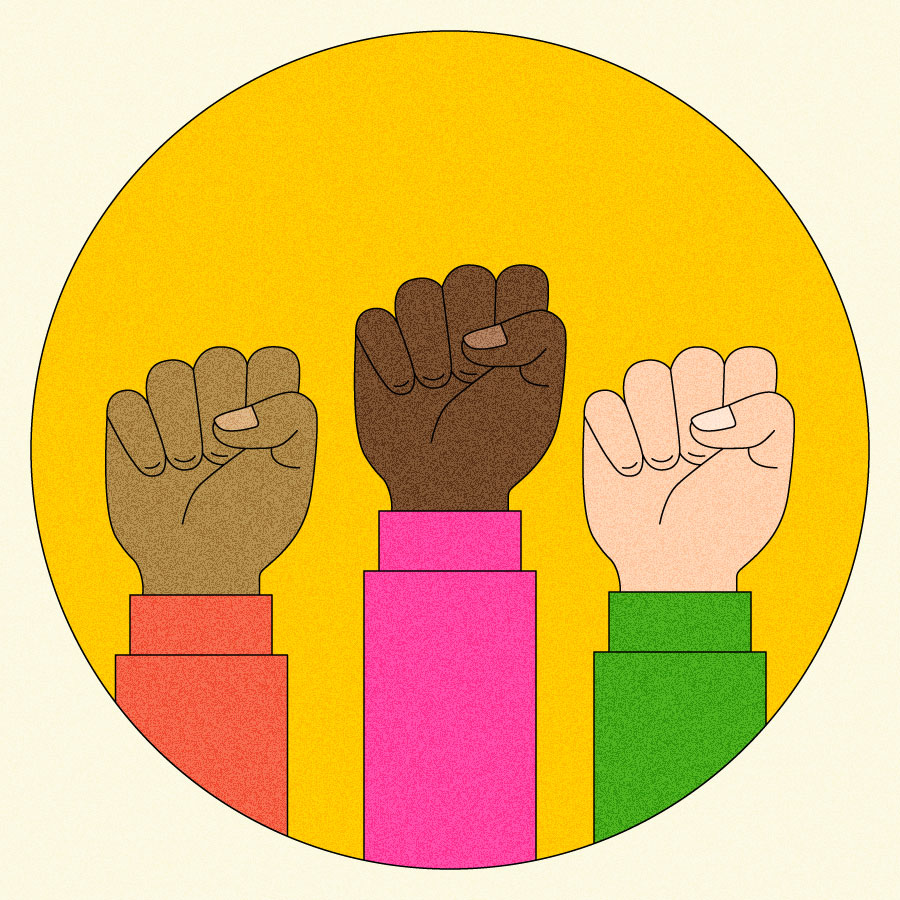
![]()
![]()
![]()


